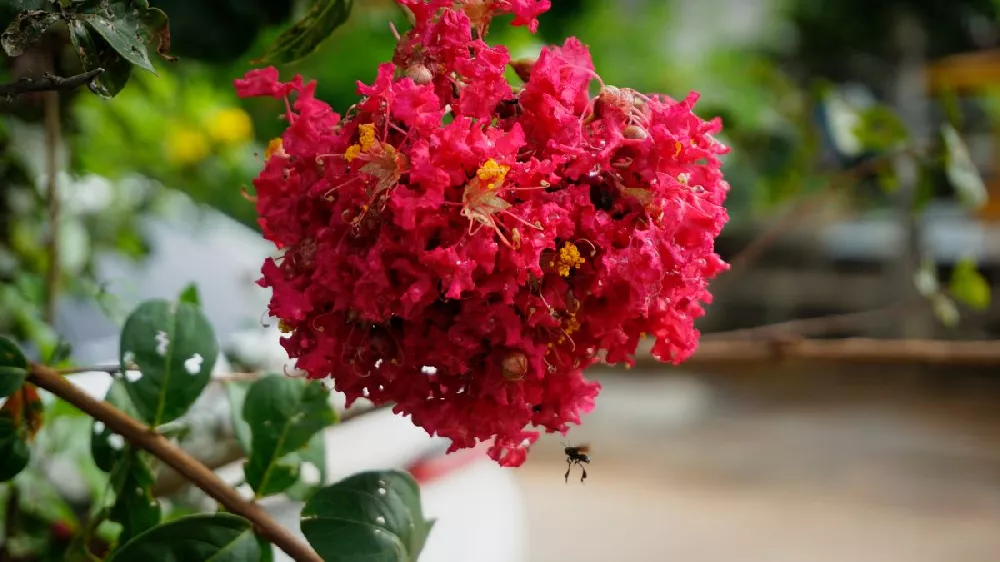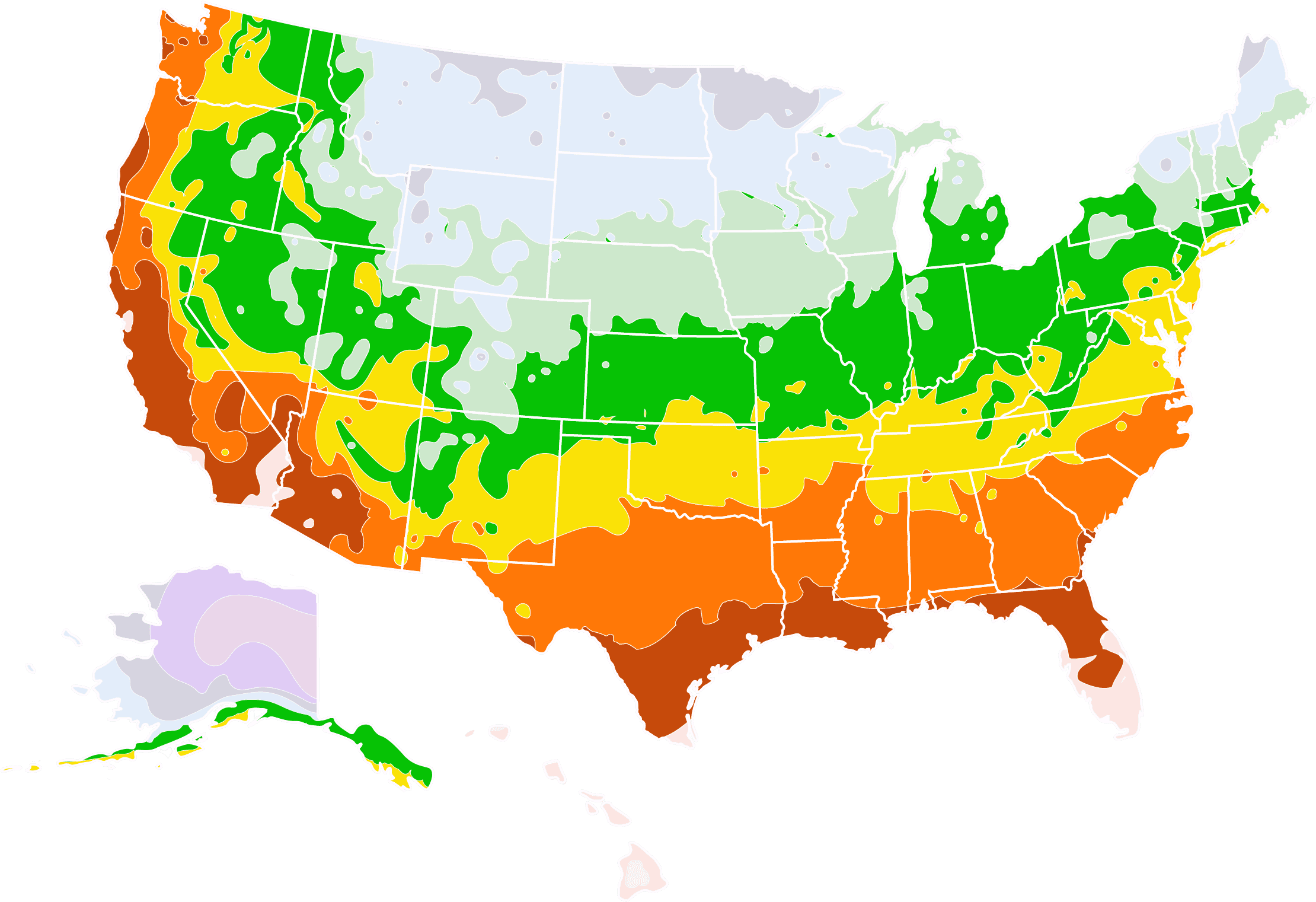Red Rocket Crape Myrtle for Sale - Buying & Growing Guide
Gardeners expect a lot from crape myrtles, but few cultivars of this species deliver as well as the Red Rocket Crape Myrtle, Lagerstroemia indica 'Red Rocket.' To start off with, it has spectacular, profuse blooms that are a clear, bright cherry red, which last from July through September. The leaves are lovely, as well, emerging a deep crimson before maturing to true green, then turning orange and red in fall. The smooth, mottled bark, meanwhile, adds interest to the winter garden with shades of orange and brown. All this in a plant that is easy to care for, with few special needs. Need a few more reasons to bring one or more into your garden? Consider these:
- Drought-resistant and needs watering only in very hot or dry weather.
- Resistant to mildew and other common diseases of crape myrtles.
- More cold-hardy than most crape myrtles, down to 0 degrees Fahrenheit.
Enter your zip code to find nearby stores that may carry this plant.
Plant Care
Sunlight

Plant your Red Rocket Crape Myrtle where it will get full sun—six or more hours of direct sunlight a day.
Watering
Water young trees weekly; mature trees only need supplemental watering in very dry or hot weather.
Fertilizing

Feed your Crape Myrtle in early spring with a product that is higher in nitrogen, such as a 20-10-10 formula.
Planting and Care
Planting instructions
Site your crape myrtle in a spot that receives at least six hours of direct sunlight a day. In the northern part of its range, place it in a protected spot away from prevailing winds. Unpot the shrub and tease out any encircling roots, which can girdle the tree and slowly kill it. Dig a hole that’s as deep as the root ball and twice as wide. Place the shrub in the hole, spreading out the roots. Holding it upright and steady, fill in around it with topsoil, tamping down as you go to eliminate air pockets. Water thoroughly. Apply a two to three-inch layer of organic mulch such as bark chips around the root zone to conserve moisture and hinder weed growth but keep it from touching the trunk to avoid problems with rot.
Watering and nutrients
When newly planted, water your Red Rocket Crape Myrtle every few days until you see signs of robust new growth. Then taper off watering to once a week. Once your tree is well-established, the only time you will need to provide supplemental watering is if you are experiencing drought-like conditions. Fertilize the shrub in the early spring with a high-nitrogen product designed for landscape trees and shrubs, such as a 20-10-10 formula.
Pollination
Crape myrtles are monoecious, meaning that male and female reproductive organs are on the same plant, and in many cases, part of the same flowers. This is true for the Red Rocket. Its bright flowers attract insects such as bees and butterflies, which carry on the work of pollination. Pollinated flowers result in small green berries that turn brown in the fall.
Pruning
Crape myrtles bloom on new wood; so, to promote flowering, prune your Red Rocket Crape Myrtle back in late winter or early spring. Prune out the thinnest branches and avoid cutting back more than one-third of the shrub in a single year — a practice sometimes called “crape murder” that results in knobby protrusions at the end of branches. Prune out suckers that occur at the base of the tree and leave three to seven sturdy trunks. You may also prune out any dead, diseased or damaged limbs whenever you see them.
Pests, diseases, and animals
The Red Rocket is largely pest and disease-free. It does not attract common insects such as crape myrtle aphids and Japanese beetles. Even if you do see insect presence on your crape myrtle, a well-cared-for, healthy tree is usually able to fend off infestation easily with no help. Common crape myrtle diseases include powdery mildew and sooty mold, but the Red Rocket is resistant to them and is rarely bothered by these diseases.
Achieving maximum results
Knowing how best to use the Red Rocket Crape Myrtle in your garden or landscape is one way to achieve maximum results. With its spectacular blooms, the Red Rocket makes an excellent specimen planting in a front lawn or other prominent locations. Consider establishing an informal grouping of three or five of these shrubs, underplanted with shade-loving perennials such as astilbes. With a mature height of up to 30 feet, the Red Rocket can work well in a foundation bed, especially for larger and taller homes. In the corner of a large backyard, a Red Rocket would fill the space nicely, providing four seasons of interest for very little effort.
FAQs
Where can I grow the Red Rocket Crape Myrtle?
Although considered a southern shrub, the Red Rocket is fairly winter-hardy and can handle temperatures as low as 0 degrees Fahrenheit. It is hardy in USDA hardiness zones six through nine, which cover most of the southern U.S., as far north as the Pacific Northwest and southern New England.
How big does the Red Rocket get?
The Red Rocket Crape Myrtle is one of the larger crape myrtles, with a mature height of 20 to 30 feet and a width of 15 to 20 feet. If you are planting in multiples, leave at least that amount between each shrub, unless you are planting them as a privacy fence, in which case you may plant them somewhat closer together.
Does the Red Rocket Crape Myrtle have invasive roots?
No. Crape myrtles do not have invasive root systems, and in fact, they are often used throughout the south in sidewalk plantings, as they do not lift the concrete as they grow. For this reason, you can use your crape myrtle as a foundation planting without worrying about the roots interfering with your foundation. Just be sure to give your shrub enough room for its mature width.
Compare Similar Products
You can't add more Product Name - Product size to the cart.
OK









